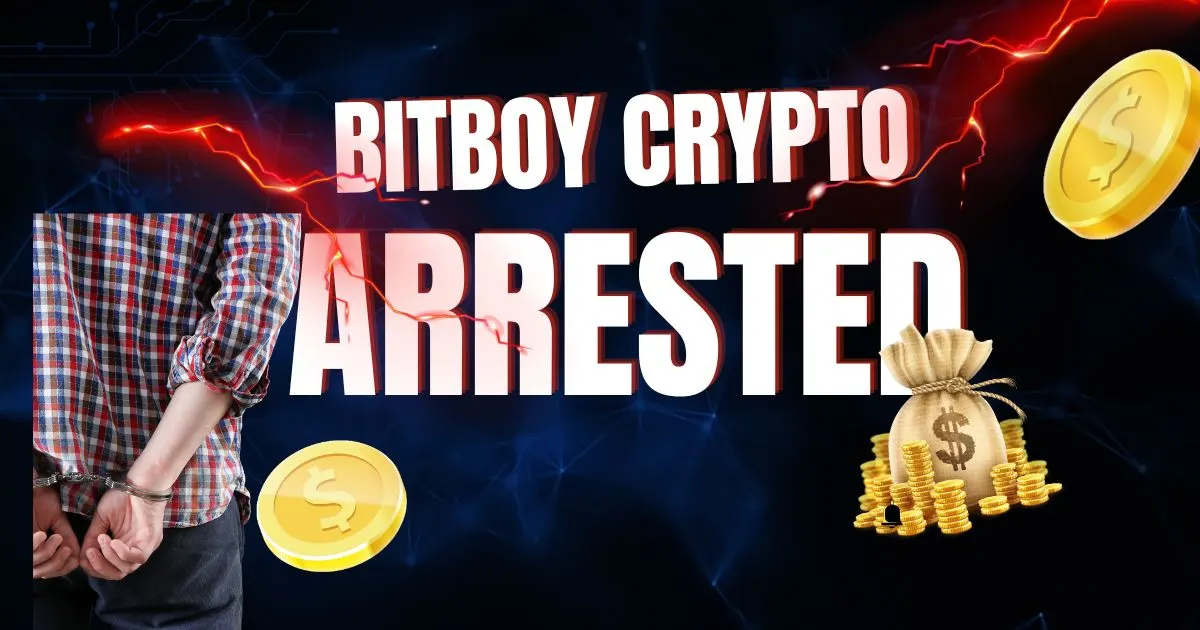Ben Armstrong, better known as BitBoy Crypto was a prominent figure within the cryptocurrency world. His journey from being a cryptocurrency fan to an influential influencer, before becoming an unpopular figure, provides an intriguing story about the unpredictable character of the cryptocurrency industry.
The beginning of life and entry into Cryptocurrency
The 27th of October in 1982 was a day at Atlanta, Georgia, Ben Armstrong’s life in the beginning was boring. Ben Armstrong attended Toccoa Falls College, from which his grades were excellent. The first time he ventured into the world of work wasn’t in the crypto industry. But the rapid rise of Bitcoin as well as other crypto currency in the first decade of 2010 attracted his attention, causing him to explore the realm of cryptocurrency.
The Birth of BitBoy Crypto
In the year 2018, Armstrong established his BitBoy Crypto YouTube channel. Its goal is to inform and educate viewers about the intricate world of crypto. His videos varied from news announcements and market analysis to discussions with leading industry professionals. His easy-going style and constant publication of news and analysis quickly gained him an impressive following. This helped establish his voice as an authoritative one in the crypto industry.
Diversification and Business Ventures
Above YouTube, Armstrong expanded his branding by hosting his own “Beards and Bitcoins” podcast along with fellow crypto enthusiast JChains. It allowed him to be able to reach a larger population and also discuss a broader spectrum of issues that relate to blockchain technology as well as digital assets. Furthermore, he also ventured into the sale of merchandise, providing clothing and accessories with a branded design which further established his place in the crypto world.
Controversies and Legal Challenges
Although he has achieved success however, his path was not without controversy:
1. Promotion of Dubious Projects
Armstrong received criticism for his endorsement of some crypto companies that were later discovered to be frauds. In particular, in the year 2020, he introduced DistX which described by him”scam-proof,” and “scam-proof,” which eventually failed, resulting in significant losses to investors. Similar to that, his promotion of Hex in 2021 caused a stir because of its promise of high yields and worries about the structural integrity.
2. Internal Company Strife
In August 2023 Armstrong was dismissed from his company, BitBoy Crypto, by BJ Investment Holdings, the parent company that owns Hit Network and BitBoy Crypto. The reason for the removal was accusations of abuse of substances that caused harm to people in physical, mental as well as financial scales.
3. Legal Entanglements – BitBoy Crypto Arrested Again?
Armstrong’s legal issues are multifaceted. In September 2023, Armstrong was convicted of loitering as well as simple assault, after he livestreamed outside the home of a former acquaintance and alleging that the suspect was in the Lamborghini in his possession. In the month of March in 2025 Armstrong had been arrested in Florida after he allegedly sent abusive emails to a judge. It led to his arrest without bond.
Financial Fluctuations
The net worth of Armstrong has witnessed dramatic fluctuations throughout the years. In the peak of his career during the Bitcoin bull run of 2025, his worth was thought to be about $30 million. Then, in the aftermath, controversies as well as legal disputes and business disputes took a huge toll on his financial position. In March 2025 the estimates indicate that the value of his assets has dropped to around 100 thousand dollars.
Personal Life and Public Scrutiny
Armstrong’s private life hasn’t been unnoticed by the media. Armstrong was engaged to Bethany Armstrong, and they have children together. In the month of November, 2023, he announced the end of his marriage on social media. He did so in a controversial manner, posting a picture of his wife as well as his lover, Cassandra Wolfe, in the caption. This led to extensive media coverage and damaged his image on the internet.
The Broader Implications
Armstrong’s journey highlights a number of crucial features of cryptocurrency sector:
Influencer Responsibility
In a world without rigid regulations, the influencers have significant authority. Armstrong’s endorsements have led a lot of fans to put their money into projects that ultimately failed, which underscores the necessity of ethics for influencers.
Volatility of the Crypto World
The soaring rise and decline of Armstrong’s career mirrors the volatile nature of the cryptocurrency market. Influencers and investors alike can witness rapid shifts in their fortunes.
Need for Due Diligence
Armstrong’s tale serves as an important reminder to investors on the importance of performing thorough research instead of relying only on the endorsements of influential people.
Ben Armstrong’s experience into the realm of cryptocurrency is an enthralling narrative of ambition, achievement along with controversy, as well as downfall. Although he played an integral part in informing and educating the general public on digital currencies However, his work has been obscured by numerous controversy and legal issues. The story is an unsettling illustration of the obligations associated with power and the volatility of the crypto sector.
